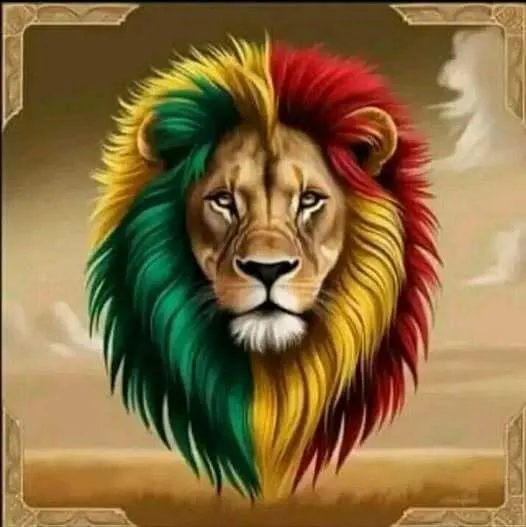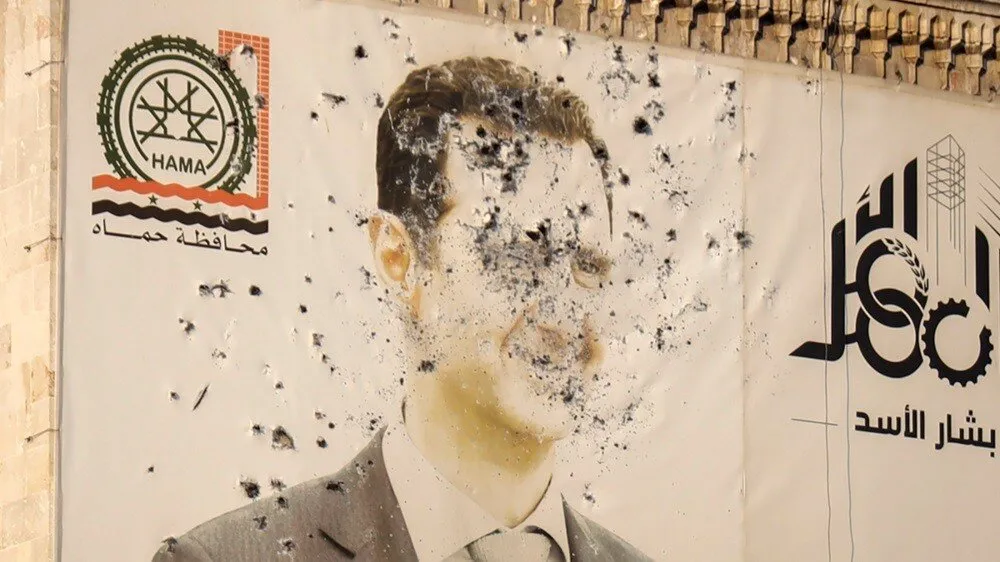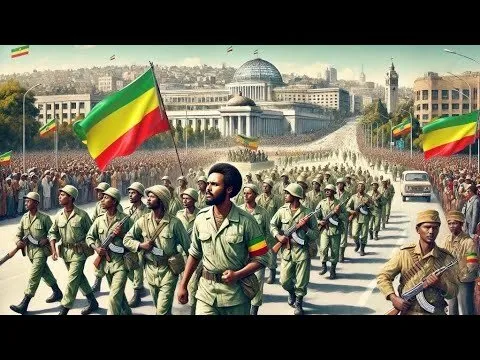Ethiopian Muslim Activists’ Reclaiming of Hope in the Face of Regime Brutality
By Alemu Tafesse, Political Analyst and academic
May 17, 2013
Anti-authoritarian struggles creep into the symbolical world both in content and form. Acts of defiance send across sparks of moments that carry multiple meanings to multiple audiences. In many instances, with more repression, more sophisticated symbolization of protest come to the fore, defying both state control and some people’s pessimist expectations.
The Ethiopian Muslims civil right movement has been a text-book instance of such pluri-meaning sets of symbolical struggle. A struggle that began with very strong and loud cry of autonomy and freedom has gone through phases that are not only unseen in the history of the country, but also unsubduable (so far) by the state authorities. A spectacular aspect of this indomitability lies in its fluidity. And its fluidity has been manifested in the multifarious innovative symbolical demonstrations of defiance that haven’t followed the classical fashion of protest, the latter being something many authoritarian governments are very adept at keeping under control usually swiftly.
Among the many symbolical moves of the Muslim protesters, three have been remarkable: the hand gestures, and the waving of white and yellow cards. The hand gestures have included the crisscrossing of vertically stretched hands symbolizing both unity and unlawful incarceration. Such a move goes diametrically against the perceived intentions of the government (i.e., shattering the unity of Muslims). It also absolves—from the protester’s perspective– the incarcerated from any guilt (as the incarceration is showed to be illegal), and also illustrates the level of state oppression prevalent in Ethiopia. This mode of protest was initiated a little after the government issued stern warning on its media that the protest—which it declared has gone “meren” (“shamelessly wild”) in Amharic– should stop or otherwise face adverse consequences. By immediately changing the colour of the “mereninet” the government was propagandizing about and was prepared to crash, the spirit of the movement continued in other forms. It was a defiant move that is quite daring in its demonstration of the persistence of the struggle
The waving of white and yellow cards symbolizes peace and warning respectively. Both show formidability and persistence. The waved white cards have challenged the terrorism discourse, and re-affirmed the peace-lovingness of the Muslim community. But the peace has not meant to be a passive one, one that accepts and lives with structural oppression. Waving white papers signifies the unflinching determination to fight—peacefully—for the prevalence of just peace. It is not content with the absence of war but the presence and maintenance of freedom, equality and justice.
The yellow card was showed by the same people who first waved the white one some weeks ago. The warning made it evident that the people couldn’t just keep demanding their rights forever. They believed, so the meaning went, that they have power to threaten; that they wanted to show publicly what they believed about their power; and that they required immediate response from the government. In other words, they didn’t protest just for its own sake, but to get the government do what they want it to do.
On May 6, 2013, something different happened. Two of the prisoners in Kality (one of Ethiopia’s notorious dungeons) tied the knot of marriage with their loved ones around them and with much fanfare and visible joy. Mubarak and Khalid are two Muslim activists recently jailed and now amongst the many facing terrorism charges. The best men of the bridegrooms were none other than four of the incarcerated Muslim members of the committee that was organized towards the end of 2011, who led the Muslim rights movement since its beginning and up till the mass arrests began. The wedding ceremony was held in the houses of the brides, in local mosques, and most interestingly, in Kality prison itself. The ceremony was reportedly very colourful and joyful.
What does all this unprecedented incident mean, politically speaking? The most important meaning, I submit, can be surmised in relation to the power of hope. Authoritarian governments don’t necessarily break the hope of their subjects, but actually limit its form and source. These governments do know that they have to satisfy as many of their subjects as possible to securely sustain their power for the longest time possible. They try to ensure that people not only fear and respect them but also love and worship them. This means that they have to ensure the prevalence of a sense of hope among the populace within the contours of the system. This is at the cornerstone of ideational hegemony that should exist side by side with coercion in order to safely sustain regime power.
However, the hope allowed to prevail is limited in many ways. First, it should always be ultimately tied to the existing regime. All happiness should as much as possible be perceived to have ensued from it. The regime should get the ultimate credit of at least the major happy milestones in the lives of the people. If and when that is not possible and an alternative source of hope is getting the attention of the people, then authoritarian regimes would to see to it that they can still have the power to obstruct that hope when and if they deem it unfavourable for the “peace” of their power. This means that alternative sources of hope can be tolerated only in so far as the dispossession of that hope is within the secure reach of the power of the government.
The form of hope that is allowable to flourish under authoritarianism can be deduced from the above reflections. Politically speaking, the ideal form is “submissive” or “dependent” hope—one that sparks through submitting oneself to the whims and interests of those that wield state power. When total control over the fate of people gets much difficult due to the globalizing trend in human rights protection and democracy, submissive hope can’t be realized in the entire corners of any country in the post-Cold war world. The second best form of hope that is allowed to subsist is thus what we may call “fragile” and “precarious” hope. As long as hope is fragile and precarious, any of its forms can be widely tolerated in dictatorship-led countries. Ultimately, although dictators can’t fairly have monopoly over the kind of hope we have as citizens of a country in the same way as they usually have monopoly over violence, they don’t usually compromise on their monopoly over the power to extinguish any “unfavourable” hope in their territory. Authoritarians never feel secure if and when they lose this latter power of theirs.
The marriage that took place in Kality is a showcase of the manifestation of not only an independent but also a defiant hope. The government has required that the Ethiopian people obediently follow it through all the “bright way towards democracy and development”. This is the official version of the government’s vision that has deafened the people at large. More tacitly, it has given the hope of enrichment and political promotion for those loyal to it. However, both the official and the unofficial versions of hope couldn’t satisfy an increasingly growing section of the population. The most vocal and the most recent one of such sections of the population has turned out to be that of Ethiopian Muslims. In their quest for collective freedom and autonomy, they have strongly envisioned a tomorrow outside and against the practical realm of the government’s discourse. They have demanded apparently easy but practically difficult (for any control-maniac regime) questions with a determination that has defied the expectations of many an observer.
The government has always had a significant power to obstruct such an envisioning, however, and it has worked, as usual, on destroying this envisioning this time around, too. Most importantly, it has incarcerated the Muslim leaders and filed a most serious charge against them under the law of the country, that of terrorism. This process of incarceration and filing of terrorism charge are obviously meant to end the movement by teaching all the “hard way”, but there is also arguably the big expectation of killing the will of the incarcerated. Incarceration, torture and accusation usually come together to supposedly create a docile body and mind with no apparent long-lasting sight of hope about life outside the prison and the court. The hope that may subsist in such a condition can go only to as far as the gates of the prison and the court are. Expectedly, all that the most hopeful of the “miserable” ones can look forward to is their day of walk out from the gruesome dungeons.
The new Muslim couples, however, have refused to be confined to such a form of “looking forward”. After the (temporary?) abortion of their hope to see a better tomorrow for their fellow Muslims, they illustrated a second round of defiance and independence in formulating their hope—this time, a more uncontrollable one. They decided to ceremoniously marry while still defending their case against the most severe accusations under the law of the country
The decision to engage oneself in a marital relationship reflects, among many others, the positive self-reflection in the person who thus commits his/herself. It reflects a strong element of positivity about one’s wish for life, and also the self-importance necessary for accomplishing and/or appreciating that positivity as it comes by. The positivity is not only strong but also long-lasting. The hope of procreation which marriage usually automatically brings with it takes one into the space of the timeless. Hence, marriage symbolizes positivity in terms of self-esteem and self-confidence as well as in terms of continuity and persistence.
While the Kality inmates were supposed to be broken through incarceration and character assassination, they manifested hope through a colorful marriage. Through this, they sent out the message that they are strong enough to desire something better and quite long-lasting. They have, this being another related message issued, strong self-confidence in their ability not only to make that positivity come true but also enjoy its fruits. Although the body is caged, the will is not only free but also untainted and unaffected by the brutal surroundings. This category of will can never come as a result of one’s dependence on the regime. It doesn’t even come within a spirit that is at peace with the system. Such a will is by its very nature outside and against the system of authoritarian control. It is a rebellious affirmation of the will to be free.
The marriage tends to conjure up a transcendental world as an expression of an alternative locus of hope. The latter does not absolutely condition its existence on what good may happen in this world as a result of any human endeavor. It does not, for instance, lean on the possibility that the inmates would one day be set free and join their family as a result of government pardon. Primarily, this hope strongly envisions that some supra-human victory may end the prison “tragedy” and give rise to family union. But this is not believed to inevitably happen or necessarily affect the hope that engendered the marriage. It doesn’t, for example, make it a requirement (for its existence) that the Ethiopian Muslims struggle for justice comes into fruition anytime soon. It rather bases itself—as a necessary condition– on certain victory that attendantly liberates the physically trapped body. The victory may be the hereafter. When one of the bridegrooms was asked to comment on the marriage, she retorted, “if we meet here in this world, well and good. If not, the rendezvous will be the afterlife”. When the expectation of family union leans neither on government mercy nor even on anti-government victory, it means that its existence is not conditioned by any state action, either positive or negative (or its consequences). This class of expectation gives one the impression that it has gushed forth from a truly liberated soul.
By obliterating the government’s attempt at breaking and rendering ineffective the human agency, the move by the two Kality inmates stood out as a daring move of resistance. It demonstrated the internal freedom the prisoners enjoy, in as much as it showed their lofty dreams that brought about their self-confidence and internal strength. But above all, it showed their commitment to their resistance. As made clear in the multiple interviews they gave, the brides strongly supported the causes of their bridegrooms, and by all means wanted them to continue the struggle. Even the mother of one of the bridegrooms overcame her motherly tenderness and came out praising her son for being imprisoned for such a cause. The whole family of the Muslim activists—the latter included– are apparently active agents in the otherwise nearly all-pervading structural trappings of the political system. Needless to say, this form of resistance also renders ineffective the government’s punishment of family dismemberment. While the taking away of a person from his/her spouse and/or parents for the sake of effecting punishment in confinement is certainly dreadful for most people, sometimes it loses its significance. When not only the whole family praise their son to be in jail, but also a new person who is supposed to live with that son all her life joins the family knowing that she may not see him beside her anytime soon—or never at all—the whole purpose of punishment by family dismemberment loses meaning. Those that might have hope in the effectiveness of such a punishment would now take heed of this lesson: the delight of resistance sometimes overcomes the pain of separation.
But it is not just that. Separation itself actually becomes a form of resistance. The Kality prisoners did not just endured happily the separation from their loved ones for the sake of resistance. They even intensified and sophisticated that separation, and used it as a form of rebellion. They included in separation special new ones into their lives and used the occasion of this “separation-inclusion” to show defiance and strength. When the government wanted to make them passive, docile victims, they chose to step up their agency and used the government’s own tool to do so. This is a masterful show of human autonomy in the face of state oppression.
A final word about the wedding ceremony: the ceremony was very loud, indicating the defeat of fear, dejection and hopelessness. It also included songs/nasheeds of defiance, indicating resistance. But a very striking aspect of it was that it was extended to the prison’s compound. The glamorous ceremony held in Kality would mean that the otherwise notorious prison was altered—albeit for few minutes—into a party house. A place of gloom, docility, and hopelessness is now altered into one of happiness, agency and resistance, and hopefulness. It has never seen such a transformation before. With the wedding ceremony effected on the Kality soil, the public manifestations of hope and resistance got their culmination. They could no more be confined to the subjective and the personal.















